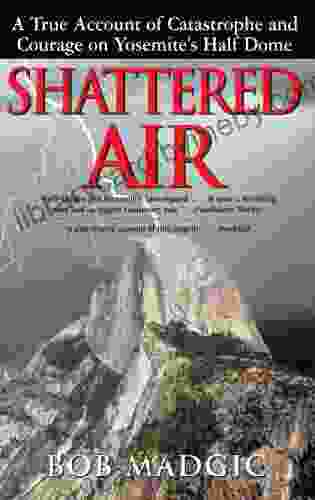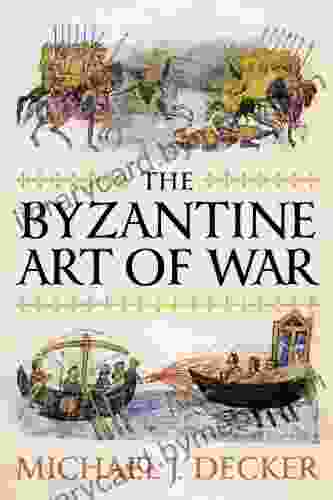The Byzantine Art of War: Unlocking the Secrets of Military Prowess and Strategic Ingenuity

The Byzantine Empire, a formidable force that spanned centuries and vast territories, was renowned for its military prowess and strategic brilliance. At the heart of this success lay The Byzantine Art of War, a treatise on warfare that codified the empire's combat doctrines and principles. This comprehensive guide, penned by Emperor Nikephoros II Phokas in the 10th century, offers invaluable insights into the strategic thinking, military organization, and combat techniques that defined Byzantine warfare.
Anatomy of the Byzantine Army
The Byzantine army was a highly organized and disciplined force. It consisted of a core of professional soldiers known as tagmata, supplemented by provincial levies and foreign mercenaries. The infantry formed the backbone of the army, employing a versatile array of weapons, including swords, spears, and composite bows. Cavalry played a crucial role, with heavily armored cataphracts charging into battle to break enemy lines.
4.5 out of 5
| Language | : | English |
| File size | : | 7560 KB |
| Text-to-Speech | : | Enabled |
| Screen Reader | : | Supported |
| Enhanced typesetting | : | Enabled |
| Word Wise | : | Enabled |
| Print length | : | 275 pages |
The Byzantine Art of War: Principles and Practices
The Byzantine Art of War is not merely a manual of tactics; it is a comprehensive treatise on the philosophy and practice of warfare. Nikephoros II Phokas emphasizes the importance of military discipline, physical training, and meticulous preparation. He advocates for a combination of mobility, flexibility, and deception to outmaneuver and overwhelm opponents.
The Principles of Byzantine Warfare
- Decentralized Command: Commanders were given a significant degree of autonomy to make decisions on the battlefield, promoting initiative and responsiveness.
- Integrated Tactics: Infantry, cavalry, and archers worked closely together, utilizing combined arms tactics to maximize combat effectiveness.
- Mobility and Flexibility: The Byzantine army was designed to move swiftly and adapt to changing battle conditions.
- Strategic Deception: Byzantine commanders employed ruses, feints, and ambushes to confuse and outwit the enemy.
- Fortified Defenses: Byzantine armies excelled in constructing and utilizing fortifications to secure territory and protect civilians.
The Art of Warfare in Practice
The principles outlined in The Byzantine Art of War found their application in numerous military campaigns. Notable victories include:
- Battle of Bulgarophygon (896): Byzantine armies led by Nikephoros Phokas defeated a numerically superior Bulgarian force, demonstrating the effectiveness of combined arms tactics.
- Siege of Antioch (969): Byzantine forces under Emperor Nikephoros II Phokas breached the formidable defenses of Antioch using deception and siege warfare techniques.
- Battle of Manzikert (1071): The Byzantine army was defeated by the Seljuk Turks, highlighting the challenges of facing a highly mobile and aggressive enemy.
The Byzantine Art of War remains a testament to the military ingenuity and strategic thinking that underpinned the glory of the Byzantine Empire. Its principles and practices continue to resonate with scholars, historians, and military leaders today, offering valuable lessons on the art of war and the pursuit of victory. Through this article, we have explored the fascinating contents of this ancient treatise, revealing the secrets of Byzantine military prowess and strategic brilliance.
4.5 out of 5
| Language | : | English |
| File size | : | 7560 KB |
| Text-to-Speech | : | Enabled |
| Screen Reader | : | Supported |
| Enhanced typesetting | : | Enabled |
| Word Wise | : | Enabled |
| Print length | : | 275 pages |
Do you want to contribute by writing guest posts on this blog?
Please contact us and send us a resume of previous articles that you have written.
 Book
Book Novel
Novel Page
Page Chapter
Chapter Text
Text Story
Story Genre
Genre Reader
Reader Library
Library Paperback
Paperback E-book
E-book Magazine
Magazine Newspaper
Newspaper Paragraph
Paragraph Sentence
Sentence Bookmark
Bookmark Shelf
Shelf Glossary
Glossary Bibliography
Bibliography Foreword
Foreword Preface
Preface Synopsis
Synopsis Annotation
Annotation Footnote
Footnote Manuscript
Manuscript Scroll
Scroll Codex
Codex Tome
Tome Bestseller
Bestseller Classics
Classics Library card
Library card Narrative
Narrative Biography
Biography Autobiography
Autobiography Memoir
Memoir Reference
Reference Encyclopedia
Encyclopedia M Zachary Sherman
M Zachary Sherman Michael J Chase
Michael J Chase Davida Hartman
Davida Hartman Ben Coes
Ben Coes Bess Streeter Aldrich
Bess Streeter Aldrich Bernadette Jiwa
Bernadette Jiwa R P Jones
R P Jones Daniela Sacerdoti
Daniela Sacerdoti Tonya Leslie
Tonya Leslie Giada De Laurentiis
Giada De Laurentiis Ben Fong Torres
Ben Fong Torres Beth Brown Reinsel
Beth Brown Reinsel Bob Berry
Bob Berry Linda Elovitz Marshall
Linda Elovitz Marshall Bill O Neal
Bill O Neal Steven W Dulan
Steven W Dulan Bernardo Kastrup
Bernardo Kastrup Michelle Mcquaid
Michelle Mcquaid Shirish Nadkarni
Shirish Nadkarni Ben Foster
Ben Foster
Light bulbAdvertise smarter! Our strategic ad space ensures maximum exposure. Reserve your spot today!

 Miguel de CervantesIt Came In The Mail: A Mysterious Package Unveils a Labyrinth of Secrets
Miguel de CervantesIt Came In The Mail: A Mysterious Package Unveils a Labyrinth of Secrets Banana YoshimotoIcons Of England: Bill Bryson's Witty and Poignant Journey Through English...
Banana YoshimotoIcons Of England: Bill Bryson's Witty and Poignant Journey Through English...
 Harold PowellFace Your Fear Sketchbook Jdl Sketchbook Collection: Your Path to Courage and...
Harold PowellFace Your Fear Sketchbook Jdl Sketchbook Collection: Your Path to Courage and... Bryan GrayFollow ·7.4k
Bryan GrayFollow ·7.4k Julian PowellFollow ·9.4k
Julian PowellFollow ·9.4k Salman RushdieFollow ·5.5k
Salman RushdieFollow ·5.5k Theodore MitchellFollow ·15.6k
Theodore MitchellFollow ·15.6k Travis FosterFollow ·9.1k
Travis FosterFollow ·9.1k Galen PowellFollow ·17.8k
Galen PowellFollow ·17.8k Brenton CoxFollow ·2.8k
Brenton CoxFollow ·2.8k Banana YoshimotoFollow ·10.8k
Banana YoshimotoFollow ·10.8k

 Ivan Cox
Ivan CoxSpeak With Ease: The Ultimate Guide to Public Speaking...
By Rupika Raj ...

 Jesus Mitchell
Jesus MitchellVulcan Forge: A Suspense Thriller that Will Keep You on...
Vulcan Forge is...

 Dashawn Hayes
Dashawn HayesThe Carteret Family Bob Martin: A Comprehensive Review
Bob Martin's...

 Owen Simmons
Owen SimmonsUnlock the World of Cultural Nuances with "The Global...
Embark on a Journey of...

 Ian McEwan
Ian McEwanConquer the Mountain: True Account of Catastrophe and...
In the heart of California's stunning...
4.5 out of 5
| Language | : | English |
| File size | : | 7560 KB |
| Text-to-Speech | : | Enabled |
| Screen Reader | : | Supported |
| Enhanced typesetting | : | Enabled |
| Word Wise | : | Enabled |
| Print length | : | 275 pages |








